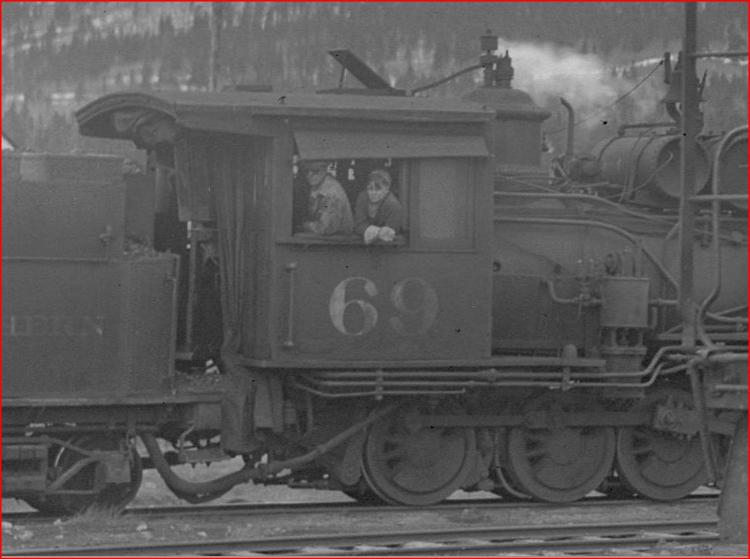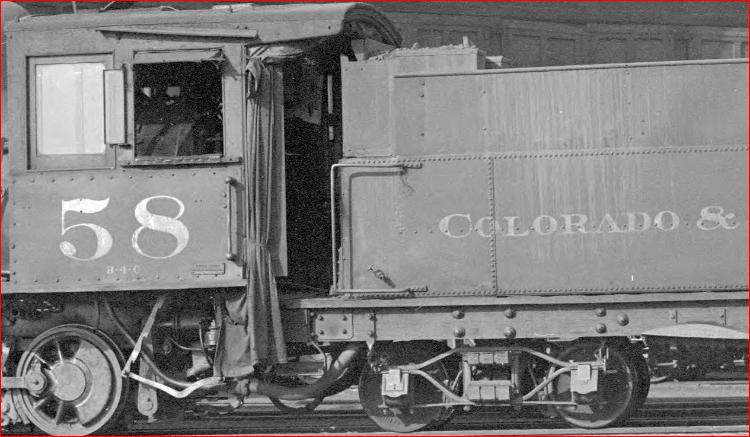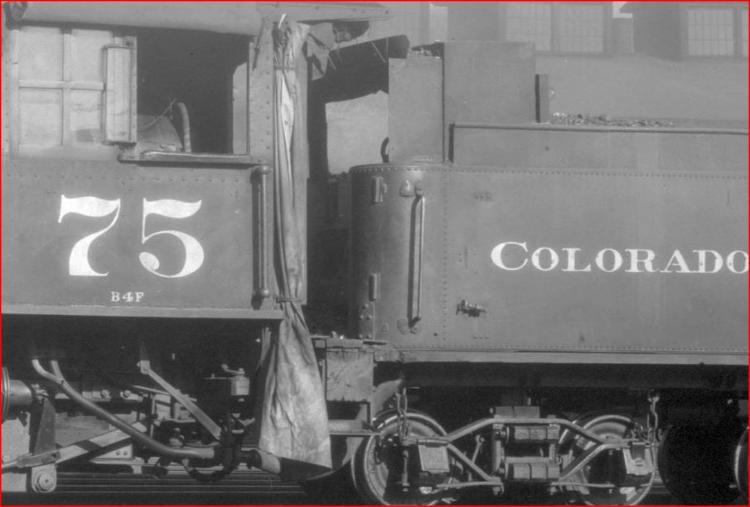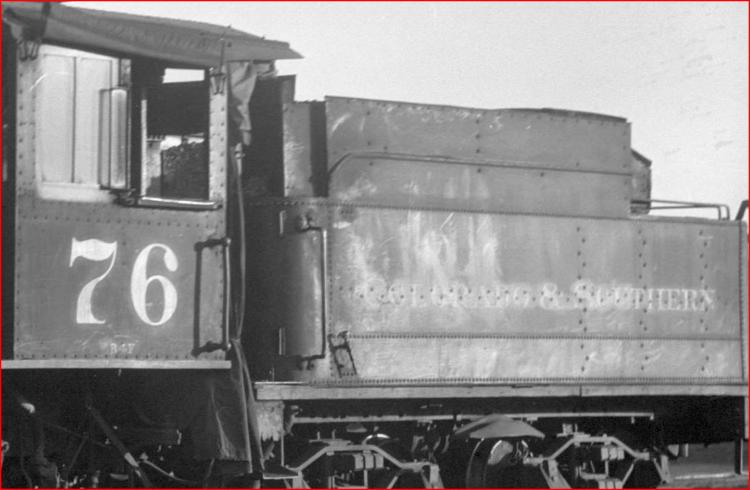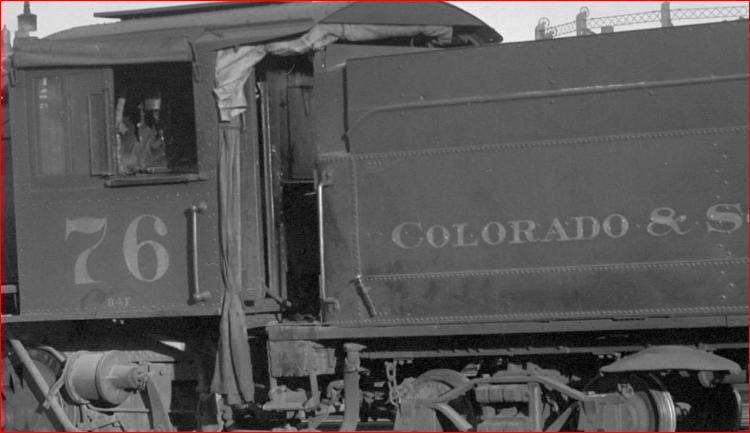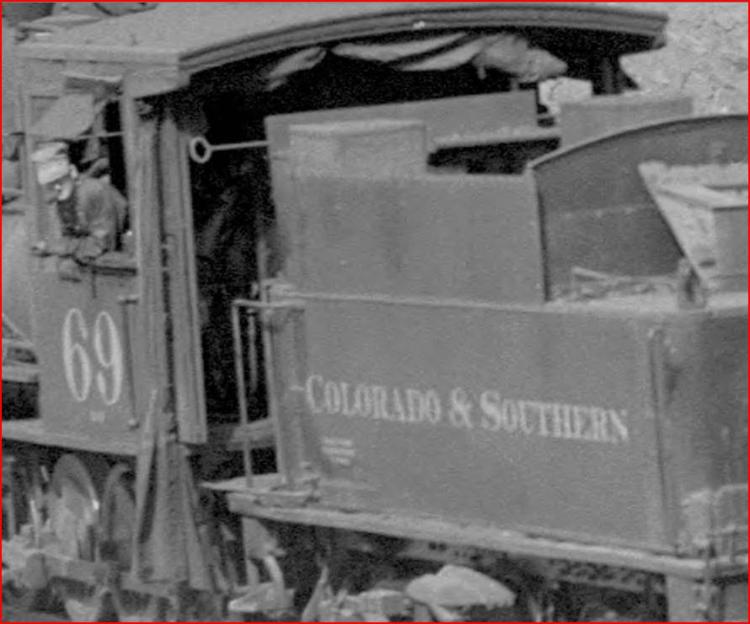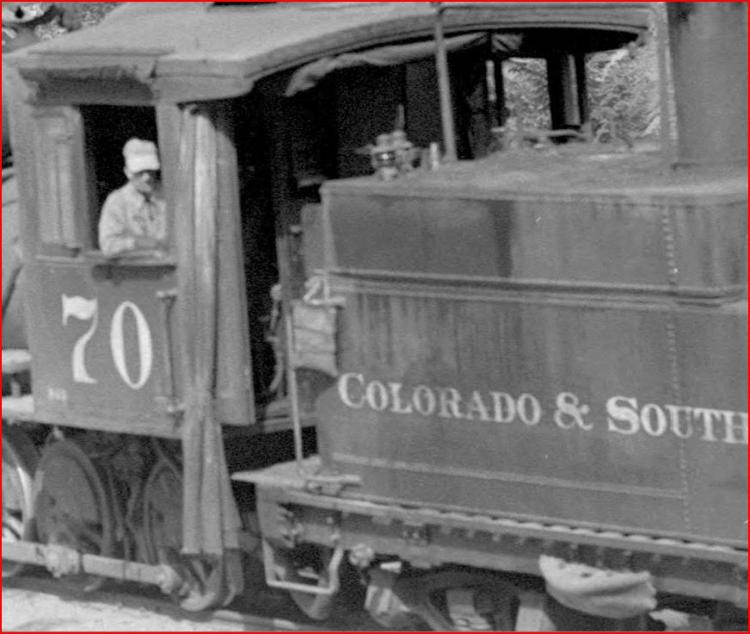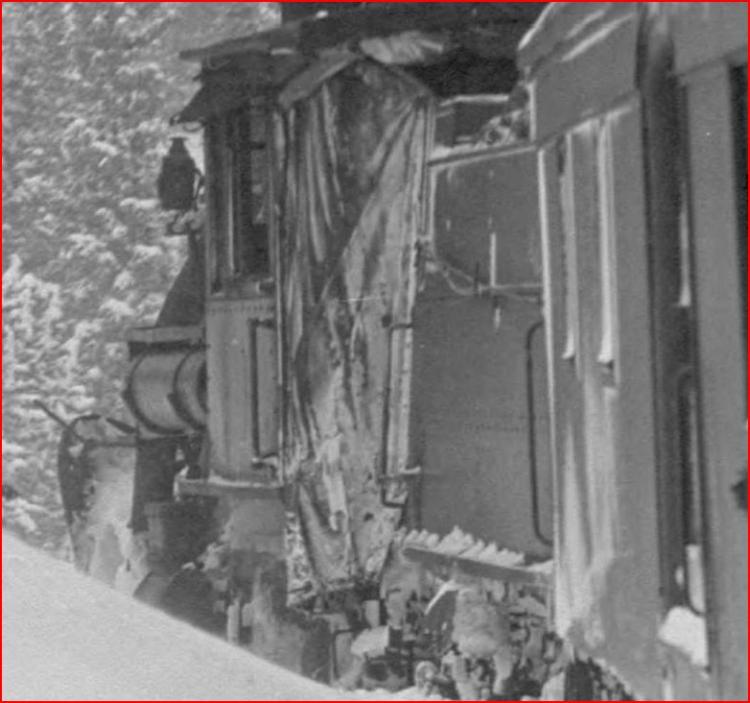C&S Cab Curtains. Part 2 Modern Style, Inside-hung Curtains with Top-Roll.
C&S Cab Curtains. Part 2 Modern Style, Inside-hung Curtains with Top-Roll.
Re: C&S Cab Curtains. Part 2 Modern Style, Inside-hung Curtains with Top-Roll.
|
Once again Chris, Great stuff.
I wonder if the reason that the cab curtain on the Engineer's side was set behind the door rather than on the outside of the cab was done for a two fold purpose. 1. because the Fireman was supposed to be the only man out on the deck plate while the locomotive was in motion, and the curtain MIGHT help keep the deck plate somewhat dry so that the Fireman had a safer place to stand. 2. to decrease the possibility of interference with the Engineer's view of the train, trainmen and hand signals while the train is in motion or during either switching or during pickups and setouts on the road. Since the door on the Engineer's side was a bifold it is unlikely that the curtain interfered with its operation other than trying to get to the Fireman to beat the crap out of him for running out of steam. For those of you who who will ask "Aren't Picking Up and Setting Out on the Road considered Switching?" The short answer is no. Picking up and Setting out are functions performed by the road crew, the Brakeman under supervision of the Conductor. Switching is done by a Yard Crew in a designated Yard by switchmen under supervision of the Switch Foreman. Brakeman and Conductors were represented by the BRT or ORC&B. Switchmen by the SUNA. Each was considered to be a different craft and if you hired out as a Switchman, you stayed there unless you wanted to jump to the BRT or ORC&B and start your seniority all over again. This craft distinction ended in the late 1960's and early 1970's depending on the Railroad after the formation of the UTU in 1969. I worked with a Conductor at one time who hired out in 1939 and had no Switchman's date and thus refused to cross craft lines and do any switching at any yard. |
Re: C&S Cab Curtains. Part 2 Wreck of #75
|
Administrator
|
Interesting, Rick, as usual.
I'm enclosing the picture of engine #75 being raised at the wreck site below Boreas in January '36. I find this quite interesting within this discussion because you can see the right side cab curtain crumpled up in a heap on the gangway next to the engineer's door. Below the engineer's door, you can see the long tail of the curtain laying on the gangway and hanging off the side as it would have been at the time of the wreck. A little background on the wreck from Doug Schnarbush, who fired #73, which was coupled with #75 and went off first. When #73, on the point, went over the side, it remained upright the entire time and distance that it came to rest, and then slowly rolled over to the right. Doug jumped off the left side gangway as the engine went over, and he came to a soft landing in the snow. The only sound he heard was the engine still slowly working steam. He called out for Engineer Charlie Thomas, but heard nothing in reply. He climbed back up on the overturned #73, and got back into the gangway. He opened the firebox, and then managed to get into the cab to close the throttle. He never described how he pulled the cab curtain out of the way to accomplish this, but it never dawned on me to have asked. Once he got off the engine again, he called out again for Charlie Thomas and this time he heard him answer back. Doug found him leaning up against a nearby tree, where he had gone once he jumped off as the engine had started to roll over. Thomas wanted to stay where he was, completely exhausted. Doug knew he needed to get back up to flag the train, which had been following behind as the helpers cleared the way. He made his way up the hill in the driving, freezing snow, and found the wrecked #75 and it's fireman, Clinton Eshe, standing nearby. Eshe told him that #75's engineer Charlie Williamson was dead. Unlike #73, #75 had gone over hard to the right, not far below the track. It must have slid some distance on it's side, because the airpump was torn loose and had damaged the jacketing behind before it smashed the front of the cab. Both Scharbush and Eshe climbed up to the track and began walking upgrade to be able to stop #537 with time enough to get it stopped. Doug said when he swung up into the cab he scared engineer Tom Gibbony half to death, as he was completely covered in snow and ice. The attached photo shows the rear of #75. The rear door is bent outward a bit just below the window. I believe this was where they jacked the door wide enough to recover Williamson's body, as it was removed shortly after the wreck, with gear that they had on the train. After going over this a couple of times with Schnarbush, I called Clinton Eshe, who was living in Baley at the time. Eshe was conversational, but really didn't want to talk much about the wreck. I told him what Doug had told me, and he agreed that it was accurate, but didn't add anything new. Again, I now wish I'd had the awareness to ask about those cab curtains. The picture shows they were taken loose from the top, and Eshe must have done it, because he had managed to reach Williamson before Doug had climed up from below. Chris' work on finding all these photos has added possibly a new dimension to the story. Did that cab curtain prevent Charlie Williamson from any chance to escape the cab before the engine went over? It would have happened pretty fast, but there would have been a few seconds..... Eshe was promoted to Engineer in 1936, and these two were the last living enginemen from the "West End" in 1986 when this and other information was collected. Including, Rick, about all the "picking up and setting out" being done Eastbound! Anyway, check out the photo. I have tried to "fix" the image by raising the contrast from the original, which was taken, I believe, by railroader Brownie Anderson. 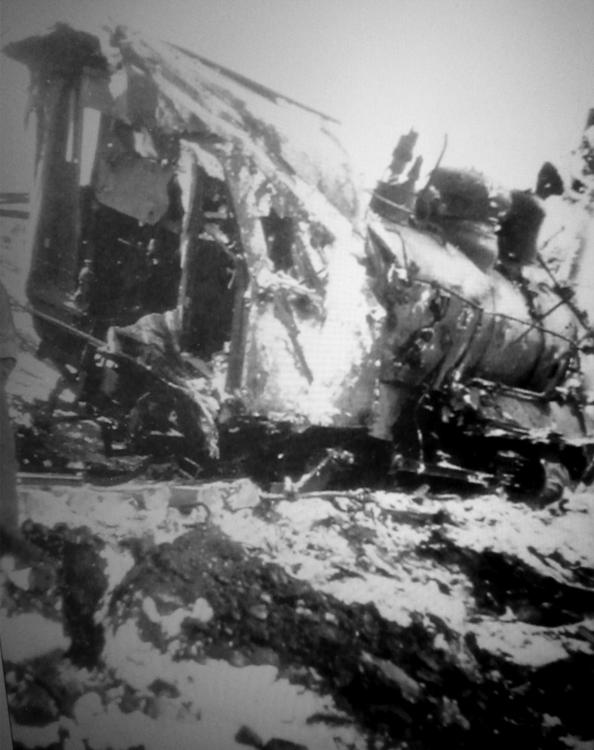
|
Re: C&S Cab Curtains. Part 2 Wreck of #75
|
Mike,
do you wish to hazard a guess as to which style curtains were on the #75 at that time? I can't say I can see the Top-roll curtain in your photo.
UpSideDownC
in New Zealand |
Re: C&S Cab Curtains. Part 2 Wreck of #75
|
Administrator
|
This post was updated on .
Chris, they were style 2 as the long engineers side curtain in the photo was style 2. At the time of the wreck the curtains were not rolled, they were loose and were probably ripped off to get in and out after the wreck. Also notice the right side curtain hanging in tatters. Could be that Eshe tore them up to get out.
|
|
One more for the Road
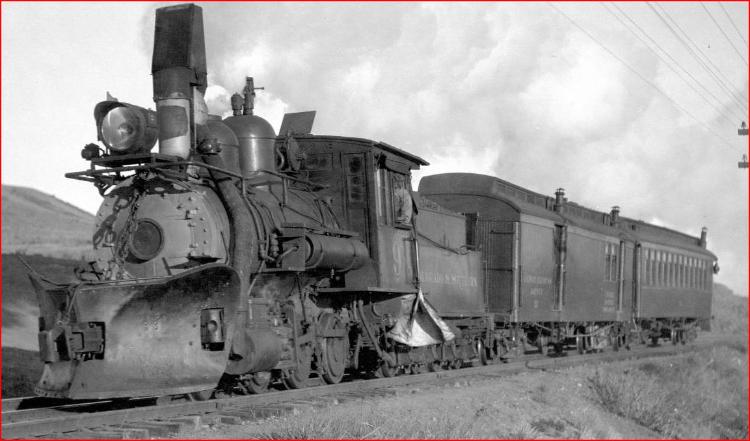 http://digital.denverlibrary.org/cdm/fullbrowser/collection/p15330coll22/id/42473/rv/singleitem/rec/79
UpSideDownC
in New Zealand |
Re: C&S Cab Curtains. Part 2 Wreck of #75
|
In reply to this post by Mike Trent
Mike,
I've given this some thought as to what you're asking, i.e. did the late-style curtains trap the Engineer, and prevent him from getting out? First I asked two retired Steam Enginedrivers here what they thought, basically they were in agreement that if the curtain is secured to the tank waterleg in the same manner visible on the Fireman's side and there is no reason to think otherwise; that the curtain is closed off between the Engineer's cabdoor and the Firebox; and the Loco rolls over to the righthandside, then yes. After showing them the various photo's of the cab arrangement, the wreck and the written account in Klinger's Highline Memories book, apart from being appalled at the cab narrowness, where the Brakevalves sit and the bi-fold arrangement of the cab reardoor which would also hamper any unplanned exit, they kind of agreed that there were a number of other factors to consider. There was a blizzard, two locos coupled running light down a very steep grade, the fatality was on the second Loco, and the time was in the early AM hours, the run commenced at 11AM the day before. Just how alert would a man be in those conditions, he wasn't driving, been out for a long time, kinda sleepy. Was he a big man or short, fat or skinny, given the tightness of those cabs, would also be a factor. Most likely swaddled in thick clothes to boot, one side frozen and the otherside sweating. Not only that but all of a sudden the Loco lurches, I'm sure there were plenty of lurches in the C&S track that may have been hard to differentiate from a normal lurch to the "Oh ****" lurch. Can you imagine how hard that frozen canvas curtain would be, retainer Tees frozen into those slots? Disorientated in the darkness, Loco tipping over, force throwing you backwards. He had to have got off of the seatbox first. That lightly-built cab won't be of any roll-over protection either, the photo's attest to that, our Dieselcabs folded up like cardboard. I also showed this stuff to the only guy I know who went in the ditch in a Diesel, he recalled that it was extremely dicey with the way the loco dropped in that he was so "paralysed by the big surprise", those being his actual words. We bet that Mr Williamson never stood a chance at getting out.
UpSideDownC
in New Zealand |
|
In reply to this post by Chris Walker
For some reason, these views remind me of the movie(s) "Beau Geste"...
|
|
CONTENTS DELETED
The author has deleted this message.
|
Re: C&S Cab Curtains. Part 2
|
In reply to this post by Derrell Poole
Are you sure you didn't mean "The Flying Dueces"?
|
«
Return to C&Sng Discussion Forum
|
1 view|%1 views
| Free forum by Nabble | Edit this page |


